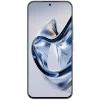Unisoc T8300

Unisoc T8300: a balanced 5G chip for the mass segment
Key specifications
-
CPU: 2× Arm Cortex-A78 @ 2.2 GHz + 6× Cortex-A55 @ 2.0 GHz; 6 nm process.
-
GPU: Arm Mali-G57 MC2 (up to ~950 MHz).
-
Memory & storage: LPDDR4X (up to 2133 MHz), UFS 2.2 / eMMC 5.1.
-
Display: FHD+ up to 120 Hz, HDR Vivid / HDR10+.
-
Video: decode 4K@30, encode 2K@30.
-
Connectivity: 5G (3GPP Release 17), Dual-SIM 5G, NR NTN (satellite), 5G MBS (broadcast), VoNR/VoWiFi, Wi-Fi 5 / optional Wi-Fi 6 1×1, Bluetooth 5.4, GNSS, FM radio.
-
Cameras & ISP: Vivimagic Gen7, Quad-ISP up to 1.6 Gpixel/s; photos up to 108 MP; 32 MP @ 25 fps; 16+16 MP ZSL.
-
Performance estimate: ~480–510k in AnTuTu v10 (device/firmware dependent).
Architecture and CPU
Switching to two “big” Cortex-A78 cores (instead of Cortex-A76 in earlier Unisoc mid-range chips) plus six efficiency-oriented A55 cores targets steady day-to-day performance with an emphasis on power efficiency. In raw CPU throughput the T8300 sits in the lower half of the mid-range: ample for browsing, messaging, navigation, and most casual games; in heavy workloads (emulators, complex 3D scenes) the two-big-core layout and modest clocks show their limits.
Graphics, display, and multimedia
The Mali-G57 MC2 is a pragmatic pick for FHD panels. Paired with FHD+@120 Hz and HDR Vivid/HDR10+ it delivers comfort in popular titles, though you shouldn’t expect stable 120 fps in demanding games. The video pipeline targets 4K@30 (decode) and 2K@30 (encode)—enough for content consumption and social media, without ambitions for 4K capture.
Unisoc’s game-oriented optimizations at the scheduler/memory/network level reduce FPS drops and loading times. These are engineering tweaks rather than a “magic” boost, but they noticeably improve stability for mass-market devices.
Connectivity and 5G features
Support for 3GPP Release 17 stands out in this class: there are baseline NR NTN (satellite) and 5G MBS (broadcast) capabilities. Also present are Dual-SIM 5G, VoNR/VoWiFi, NR bandwidth up to 100 MHz, and reduced power draw in typical 5G scenarios.
Cameras, imaging, and audio
A quad-core ISP (up to 1.6 Gpixel/s) and Vivimagic Gen7 lift photo/video quality: hardware MFR/TNR, improved 3A 5.0 algorithms, multi-frame night mode, and portrait segmentation. The ceiling is 108 MP for photos; selfies up to 32 MP @ 25 fps; dual-rear 16+16 MP with zero shutter lag. The audio path with a HiFi (HiFi4) codec, 2.0 spatial sound, and extended noise suppression covers multimedia needs.
Memory, storage, and interfaces
The chip targets LPDDR4X and UFS 2.2—a sensible price/UX trade-off. Wireless includes Wi-Fi 5 (optional Wi-Fi 6 1×1), Bluetooth 5.4, major GNSS constellations, and FM radio—sufficient for lower-mid devices.
Comparisons and positioning
Versus Unisoc T820 (previous Unisoc mid-range).
T820 used Cortex-A76 (1+3) and a wider Mali-G57 MP4. T8300 moves to newer Cortex-A78 (2) and a narrower GPU (MC2). In real-world tasks and efficiency the T8300 feels more modern (Rel-17 5G, satellite support, MBS, refreshed audio/ISP), while T820 can show higher theoretical GPU throughput thanks to twice the clusters. Bottom line: T8300 is a step forward in features and efficiency; T820 can be stronger on paper in pure GPU width.
Versus MediaTek Helio G200 (competing 6 nm base mid-range).
Both SoCs use 2× Cortex-A78 + 6× Cortex-A55 and Mali-G57 MC2, so benchmark spread is small. In some tests T8300 posts a slight edge (typically a few percent), but it’s statistical rather than a clear lead. T8300, however, offers broader connectivity (Rel-17 with NTN/MBS), while G200 traditionally leans on HDR photo/video blocks and MediaTek’s software game profiles. Choice depends on device pricing and priorities—connectivity/battery life vs. camera features.
Versus Snapdragon 6 Gen 4 (a tier above).
S6G4 is built on 4 nm and uses newer Cortex-A720/A520 cores and Adreno graphics. It’s predictably stronger in raw performance and efficiency, but also pricier—for both the chip and devices. If you want the latest CPU cores and a beefier GPU, S6G4 wins; if you need a “sensible minimum” for 5G with interesting connectivity features and tight budgets, T8300 is a practical alternative.
In practice and devices
At MWC 2025, the nubia Neo3 5G debuted on the T8300—showing the chip targets not only ultra-budget phones but also affordable “gaming” models with 120 Hz displays. Also used in: nubia Neo 3 5G, HMD Crest 2.
Verdict
The Unisoc T8300 is a “workhorse” of the mass-market 5G segment with a focus on connectivity and multimedia. CPU/GPU performance is solidly mid-range, while standout points include Release-17 features (NTN/MBS), a mature Quad-ISP, and a well-rounded display/audio feature set. Versus the previous Unisoc wave and baseline MediaTek rivals, it looks fresh and competitive—especially in devices where price matters more than maximum FPS.
Basic
GPU Specifications
Connectivity
Memory Specifications
Miscellaneous
Benchmarks
Phones with T8300

Comparison of Devices with T8300
Compared to Other SoC
Share in social media
Or Link To Us
<a href="https://cputronic.com/index.php/soc/unisoc-t8300" target="_blank">Unisoc T8300</a>